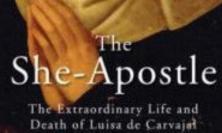The new Directory for Catechesis issued earlier this year sets out the ways in which teaching the faith and forming people to teach the faith serve the goal of enabling relationships with Christ. Thomas Flowers SJ surveys the history of catechesis, and the particular contribution made by a Jesuit saint, to ask how easy it is to define methods of inviting people to a life with Christ when that invitation will be heard in so many different languages, cultures and contexts.
In March of 1550, Peter Canisius wrote an anxious letter to his Jesuit superiors in Rome, pleading for their prayers and counsel, and that they send him ‘a catechism for the Germans.’[1] Dismayed at the religious ignorance of his students at the University of Ingolstadt and the popularity of Lutheran ideas among the Catholic faculty, Canisius saw a new, Jesuit-created catechism as an essential tool for restoring the Catholic faith in Bavaria. In June of 2020, the Pontifical Council for the Promotion of the New Evangelisation issued a new Directory for Catechesis. Its authors note that ‘in the current situation, marked by a great distance between faith and culture, it is urgent to rethink the work of evangelisation with new categories and new languages that may serve to emphasise its missionary dimension.’[2] The question of how to teach the faith to people grown sceptical and suspicious is not new. But as often as we attempt to answer it, we are dismayed to discover that the world has changed again and our catechetical methods have not kept pace with the language, needs and doubts that permeate our culture. Yet the work of St Peter Canisius – Doctor of the Church and one of history’s most successful catechists – holds particular hope for the challenge offered by the new Directory for Catechesis. For Canisius’s catechism demonstrates the inherent adaptability of Catholic catechesis, and so how we might better meet the moment in which we find ourselves today.
The new Directory for Catechesis makes clear that the goal of catechesis must always remain enabling ‘intimate communion with Christ,’ and in pursuit of this end, the local Church is called to inculturate the general principles of catechesis laid out by the Directory.[3] Increasing our knowledge of doctrine serves as a means toward the end of deepening our relationship with Christ. Yet if we present doctrine in a language people do not understand, if our theological constructions are arcane or bound to an irrelevant cultural context, then people will not understand the faith well enough to desire to know Christ. Given this challenge, the Directory does not itself attempt to engage in a definitive exposition of doctrine, but rather considers carefully the principles that ought to govern both how we teach the faith and how we form people to teach the faith.
The Directory makes its most significant foray into the content of catechesis in its discussion of the continued relevance of the Catechism of the Catholic Church, published and promulgated by Pope John Paul II in 1992 and issued in its definitive form in 1997. The Directory presents the Catechism as the Church’s official and ‘indispensable’ guide for catechesis and its four parts – the Profession of Faith (the Creed), Liturgy (the sacraments), the Life of Discipleship (the commandments) and Prayer (the Our Father) – as ‘the fundamental dimensions of the Christian life.’[4] The Directory holds that the Catechism is ‘a dynamic instrument, suitable for inspiring and nourishing the journey of faith in the life of every person.’[5] While the Catechism itself does not contain a universally-applicable methodology, the Directory nevertheless regards both its content and its approach as fundamental for any current-day catechetical endeavour.
The Directory roots its claim that the four-fold structure of the Catechism represents the ‘fundamental dimensions of Christian life’ in a line from the Acts of the Apostles: ‘These remained faithful to the teaching of the apostles, to the brotherhood, to the breaking of bread and to the prayers’ (Acts 2:42, NJB). It then goes on to assert that the same four-fold structure of the Catechism was used by the catechumenate in the early Church and by ‘various’ catechisms throughout the centuries. There has always been, according to the Directory, a four-fold approach to catechesis that uses the Creed, the Sacraments, the Commandments and the Our Father as a way of teaching the four pillars of Christian life. Admittedly, the Directory is not primarily interested in the history of catechesis, and so some degree of historical over-simplification is understandable. Yet an appreciation of how much more complex the actual history of catechesis is serves to advance the goal of the Directory.
The life of the Apostolic Church described in Acts 2:42 evokes the sort of holistic approach to catechesis we all desire: one that involves not just teaching, but public liturgy, private prayer and community. But this line from Acts did not provide the early Church with a four-fold structure for catechesis. In the early Church, the process of becoming a Christian – the catechumenate – involved both ritual actions and instruction. As the catechetical sermons of St Cyril of Jerusalem testify, teaching the Creed was often a key component of preparation for sacramental initiation, and once new Christians had been baptised, confirmed and begun to participate in the Eucharist, they were further taught about these sacraments they had received. Other Church Fathers, like St Augustine of Hippo, point to the centrality of the Lord’s Prayer in early Church religious instruction. But there was no fixed programme for the catechumenate that was standard in all parts of the Church. No codified set of catechetical pillars existed.
In the Middle Ages and early modern period, books of catechesis were written – what we would now call ‘catechisms.’ Many of these taught the Christian faith using key texts and lists: for example, the Apostles’ Creed, the Our Father, the Cardinal and Theological Virtues, the Seven Deadly Sins and the Ten Commandments. But there was no one curriculum, and many popular catechisms lacked one or more of the four texts the Directory and the Catechism regard as pillars. For example, the Lay Folks’ Catechism issued by the Archbishop of York in 1357 did not include the Our Father or any teaching on prayer, and the popular 1535 German catechism of Georg Witzel did not teach anything on the sacraments. The array of approaches and texts included among the Catholic catechisms produced up through the sixteenth century is vast, and while they are all clearly Catholic, they just as clearly do not agree on pedagogical principles or content.
Peter Canisius was the inheritor of this confused catechetical tradition. He also witnessed the enormous popularity and influence of the Protestant catechism written by Martin Luther in 1529. Luther’s purposely simple catechism taught the Christian faith using the texts of the Ten Commandments, the Apostles’ Creed and the Our Father, with an appendix on the sacraments of Baptism and Eucharist. The popularity of Luther’s catechism was part of what drove Canisius to desire the creation of a new Catholic catechism. The request that Canisius made of his Jesuit superiors in 1550 for a new catechism eventually resulted in Canisius writing the catechism himself. He published his first catechism in 1555, and then, over the next few years, he wrote smaller, simpler versions for young adolescents and children. Since there was no clear set of principles governing how to write a catechism, Canisius created his own. He included nearly everything: it is hard to find a catechism before or after Canisius that treats a more extensive set of topics. He certainly covers the Creed, the Sacraments, the Commandments and the Our Father, but he also teaches the Seven Deadly Sins, the Beatitudes, the Evangelical Counsels (poverty, chastity, obedience), the ‘Principle Good Works’ (prayer, fasting, almsgiving), and many more obscure topics, such as the four sins in Scripture that are said to ‘cry unto heaven’ and the list of the ‘sins of another in which some fault is our own.’
But the breadth of subjects he covers is not nearly as revealing of his catechetical approach as the way he arranges them. According to the new Directory for Catechesis, the commandments properly appear in Catholic catechesis as an exposition of the Life of Discipleship. Thus, the section on ‘Life in Christ’ in the Catechism of the Catholic Church prominently features the Ten Commandments as categories to explain the moral life, outlining the obligations these commandments impose upon us and the particular sins they call us to avoid. On the other hand, Canisius frames his teaching of the Ten Commandments as an elaboration of the theological virtue of love. In this, he follows not only Christ’s teaching on the greatest commandment, but also a catechetical tradition going back at least as far as St Augustine, linking the theological virtue of love to teaching the commandments. Canisius’s explanations of each commandment are relatively brief, eschewing the sort of elaboration of Catholic moral teaching provided by the Catechism of the Catholic Church.
The reason for this choice lies in the structure of the catechism. Canisius’s catechism has two parts: one on Wisdom and one on Justice. The part on Wisdom contains his teaching on the Creed, the sacraments, the Lord’s Prayer and the Ten Commandments. The part on Justice offers a first chapter on ‘fleeing evil’ and a second on ‘pursuing the good.’ This is Canisius’s primary vehicle for moral instruction. It begins with a description of sin and why we should avoid it, and builds toward a portrait of blessedness based on imitating Christ in a life of poverty, chastity and obedience. When Canisius made the Spiritual Exercises of St Ignatius, he had learned from his retreat director, St Pierre Favre, that in order to follow Christ, we need to know our sins, so we can reject them, and then to know Christ, so we can follow him. Canisius could think of no better way to frame the moral life than this, so in his catechism he used traditional Catholic lists of sins and virtues as a means to teach his students how to reject evil and pursue the good.
In so many ways, Canisius’s catechism bears the marks of its age: he speaks in the theological language of the sixteenth century, he uses texts and lists made popular by medieval catechesis, and his understanding of the Church and who can be saved, by our post-Vatican II standards, is severely limited. But the spirit of his catechesis embraces the most fundamental message at the heart of the new Directory for Catechesis: catechesis must be oriented towards ‘intimate union with Christ’ and adapted to the language and particular needs of the people whom it addresses. By teaching morality according to the logic of the Spiritual Exercises, Canisius offers a way to present the moral teachings of the Church in a way that is significantly more Christocentric than any catechetical programme simply derived from the Ten Commandments. He did not deny the importance of the commandments, but found them a more apt way to describe the Wisdom of God than to ground our life of Christian discipleship.
The new Directory for Catechesis again and again calls for a renewal of catechesis along evangelical lines, so that as we teach people the faith and help them to grow in it, all our efforts keep ‘the person of Jesus Christ, living, present, and active’ at their centre.[6] This enterprise, the Directory makes clear, requires that we know the people whom we teach and that we respond to their questions and concerns in a way they will understand. Catechesis must be adaptable. Yet the Directory presumes a consistency in catechetical methodology and structure over the centuries that the complicated history of catechesis belies. Our somewhat erratic efforts at catechesis over the centuries suggest that perhaps we need worry less about specific texts and catechetical pillars and more about how to bring people to Christ while keeping grounded in the teachings of the Church. St Peter Canisius has been consistently lauded by popes – including St John Paul II and Benedict XVI – for the wisdom and effectiveness of his catechetical efforts, and yet his approach to catechesis does not cling to what we tend to assume are necessary catechetical norms. Perhaps his ability to adapt catechesis so radically while staying true to Christ and the Church’s teaching has something to tell us about how to teach the faith today.
Thomas Flowers SJ is a member of the USA West Jesuit Province and is studying for a PhD in Jesuit History at the University of York.
[1] Otto Braunsberger SJ (ed.), Beati Petri Canisii, Societatis Iesu, Epistulae et acta, vol. 1 (Freiburg im Breisgau: Herder, 1896), p. 313. The original letter is in Italian; the translation is my own.
[2] Directory for Catechesis (New Edition), §44.
[3] Directory for Catechesis, §3-10.
[4] Directory for Catechesis, §184.
[5] Directory for Catechesis, §192.
[6] Directory for Catechesis, §169.






